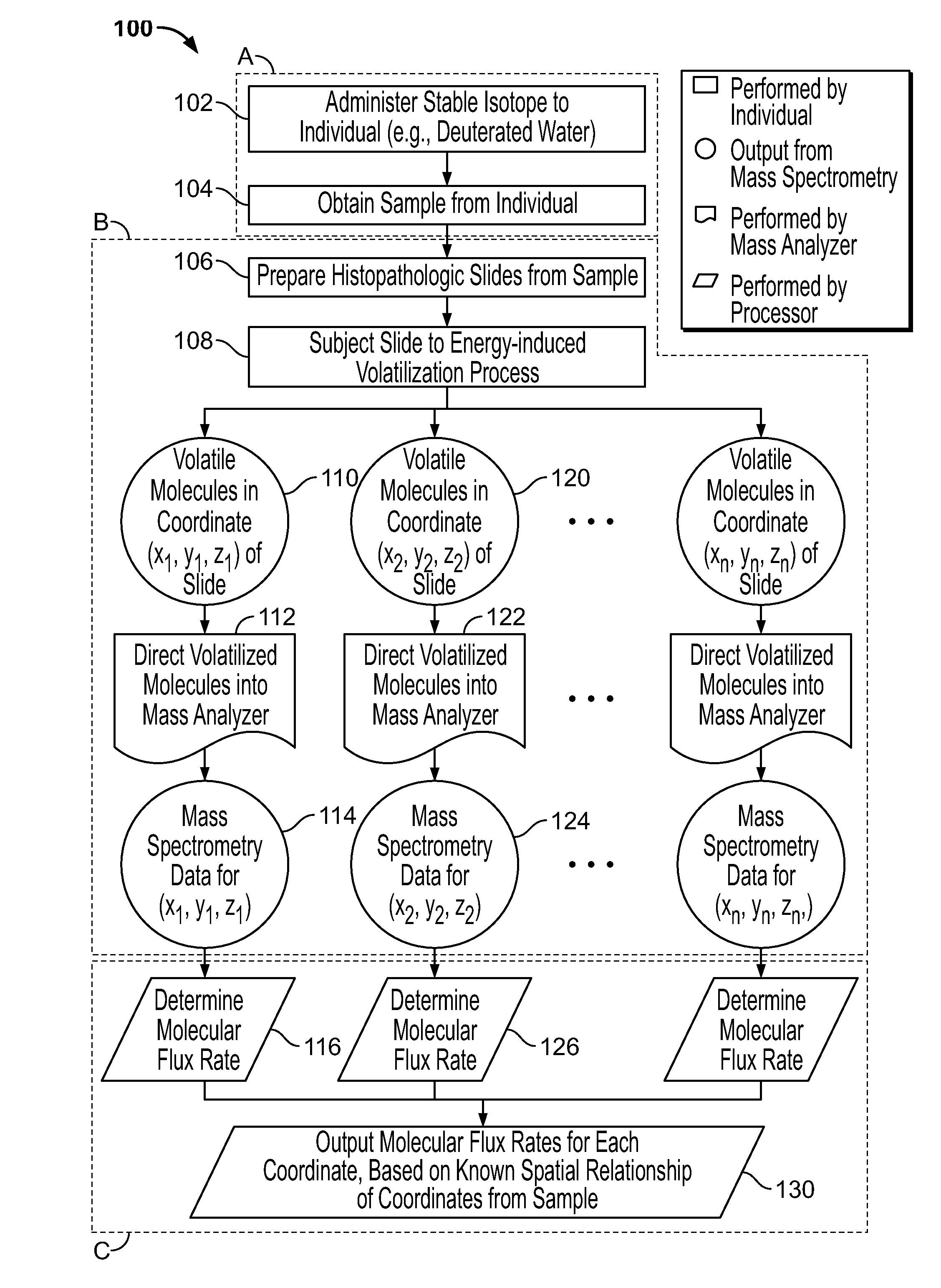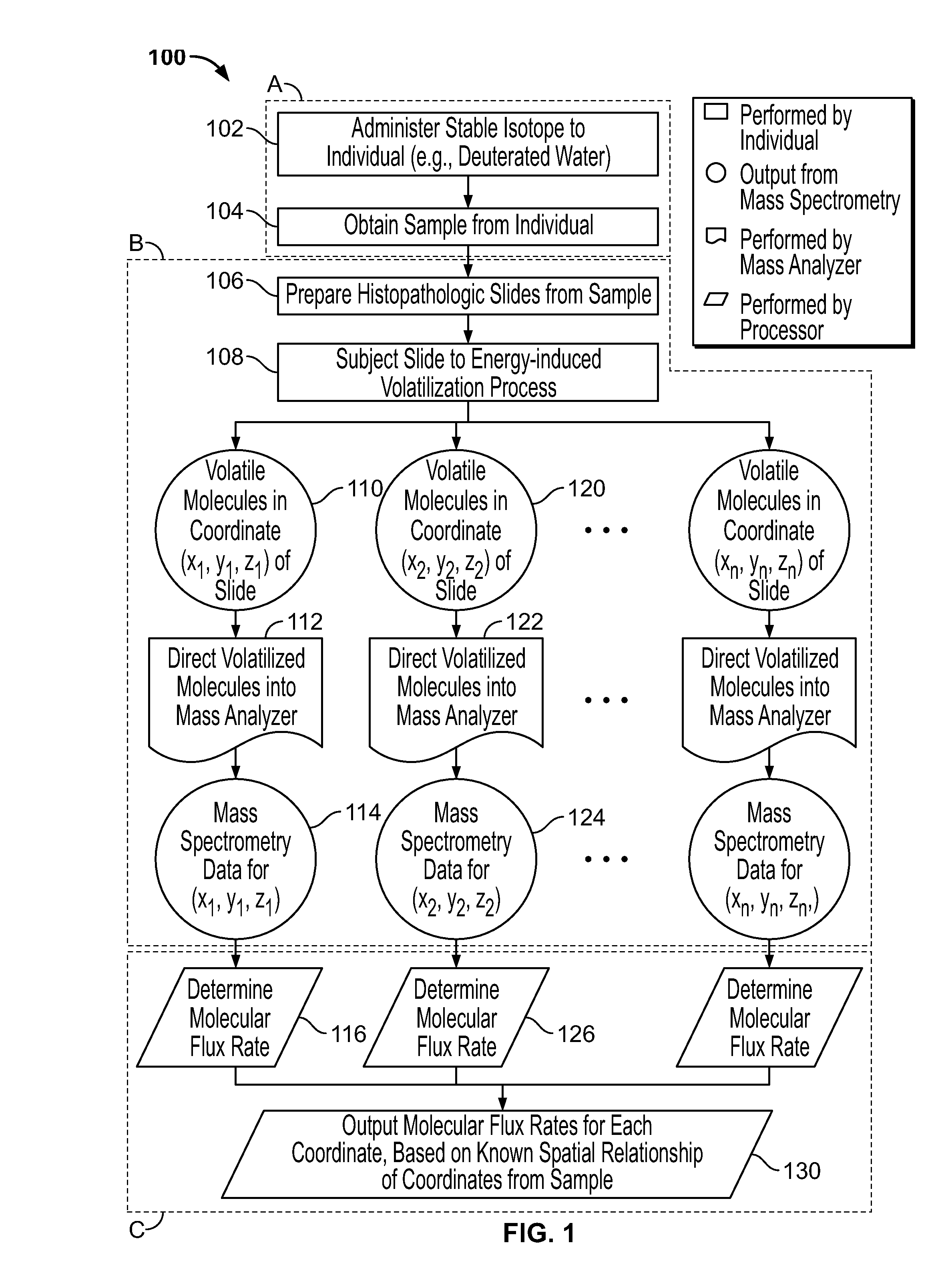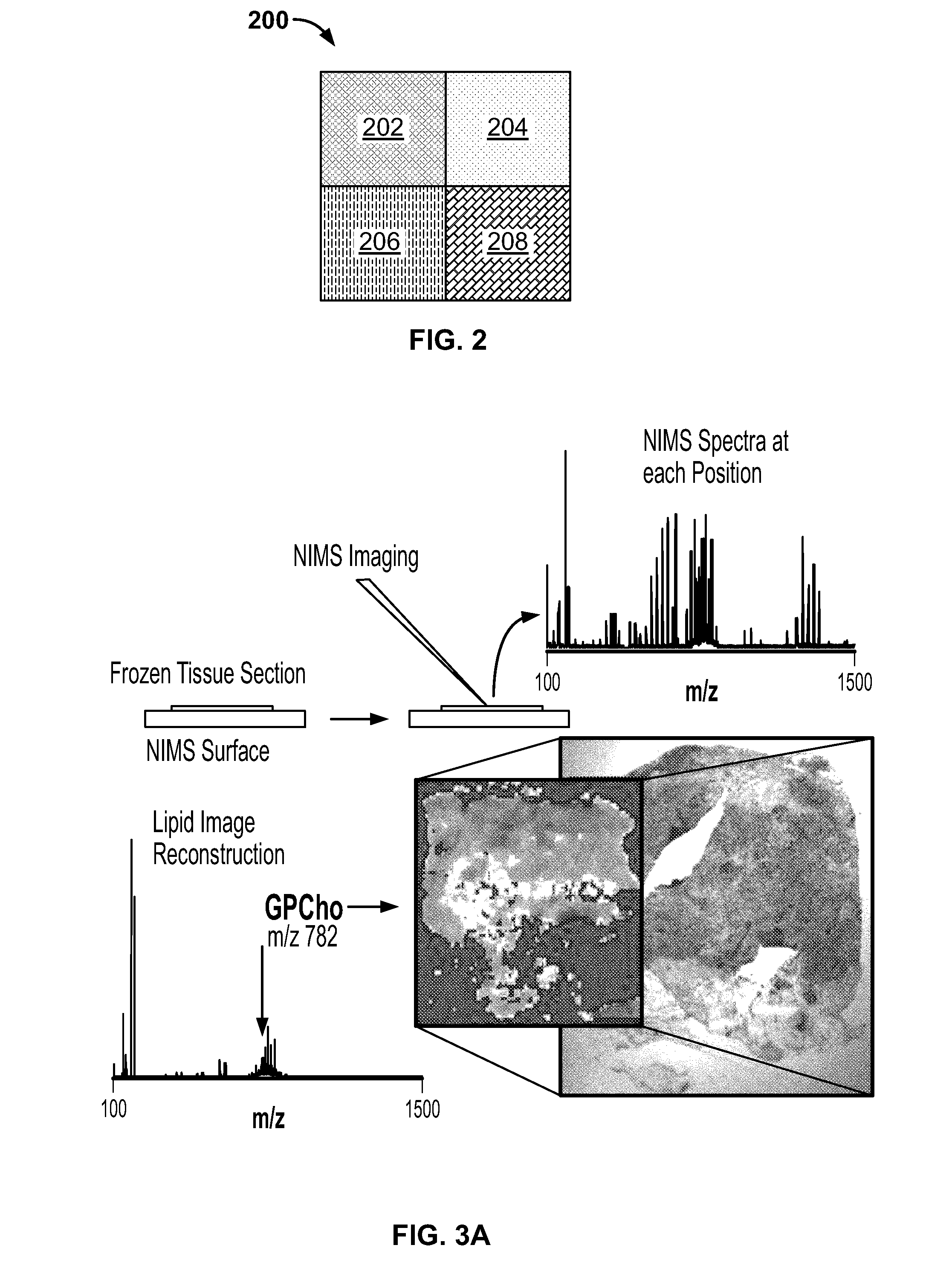Metabolic flux measurement, imaging and microscopy
a metabolic flux and microscopy technology, applied in the field of metabolic flux determination, microscopy and functional histopathology, can solve the problems of loss of spatial information, all current histological analyses are ‘blind’ to the spatial order, and altered metabolism may limit the efficacy of standard anti-cancer therapy, etc., to achieve the effect of allowing or increasing the energy-dependent volatilization of molecules
- Summary
- Abstract
- Description
- Claims
- Application Information
AI Technical Summary
Benefits of technology
Problems solved by technology
Method used
Image
Examples
example 1
Integration of Deuterium Isotopic Labeling with Nanostructure-Initiator Mass Spectrometry (NIMS)-Based Metabolite Imaging Technology to Generate Histochemical Flux Images
[0182]Here we propose a novel integration of nanotechnology based mass spectrometric tumor imaging, with mass isotopomer quantitation and kinetic analysis after deuterium label incorporation, with the goal of quantifying fluxes directly within the 3D architecture of the tumor and the microenvironment. This overcomes critical challenges in the field by directly measuring metabolic phenotypes within the physiological context.
[0183]In vivo approaches for characterizing the molecular dynamics of complex biochemical networks, based on the internal patterns of incorporated labels have been developed, tested and extensively validated. See Hellerstein, M. K. and R. A. Neese, Mass isotopomer distribution analysis at eight years: theoretical, analytic, and experimental considerations. American Journal of Physiology—Endocrinol...
example 2
Kinetic Histology of Mouse Tissue with NIMS
[0220]Whole mouse imaging has shown that there are complex metabolite patterns that can be imaged using NIMS over large areas (FIG. 7). To determine the ability to image isotopomer abundance patterns and consequently determine the flux, dissected tissues from adult mice that were given 5% 2H2O for three days were sectioned and imaged with NIMS (FIG. 7A). For each pixel, numerous labeled metabolites could be observed. For example, phosphocholine was one of the dominant signals[37] in the TOF-SIMS imaging spectra. In the case of phosphocholine, there are 15 hydrogen atoms in C—H bonds. As can be seen in FIG. 7D, the ratio of M1 / (M1+M0), or relative flux, increases over the course of 3 days of administration of 2H2O. It can be calculated that there are 3 hydrogens that could be exchanged with deuterium in cellular water for phosphocholine. All of the other hydrogens are non-labile metabolically and come from nutritional-sources such as exogeno...
example 3
Flux Microscopy for Healthy Human Tissue
[0223]Determine Spatial Turnover Kinetics of Lipid Metabolites (Kinetic Histochemistry) in Healthy Human Tissue.
[0224]Here, we will validate existing clinical protocols and determine the clinically feasible time points for tissue collection that give useful lipid flux distributions using NIMS tissue imaging. Specifically, we will define the clinical 2H2O administration, sample handling, and analysis protocols by using relatively accessible human tissue samples to identify and overcome procedural and technical challenges. Compared to preclinical experimentation, human studies have a number of distinct challenges that affect the quantification of newly-synthesized metabolites in heavy water labeling studies. Different isotopic enrichments in the metabolic products compared to mouse tissues will almost surely result due to slower basal turnover rates, lower precursor pool enrichments (2H2O % in body water), and time-varying labeling enrichment cu...
PUM
| Property | Measurement | Unit |
|---|---|---|
| mass | aaaaa | aaaaa |
| pixel size | aaaaa | aaaaa |
| thickness | aaaaa | aaaaa |
Abstract
Description
Claims
Application Information
 Login to View More
Login to View More - R&D
- Intellectual Property
- Life Sciences
- Materials
- Tech Scout
- Unparalleled Data Quality
- Higher Quality Content
- 60% Fewer Hallucinations
Browse by: Latest US Patents, China's latest patents, Technical Efficacy Thesaurus, Application Domain, Technology Topic, Popular Technical Reports.
© 2025 PatSnap. All rights reserved.Legal|Privacy policy|Modern Slavery Act Transparency Statement|Sitemap|About US| Contact US: help@patsnap.com



